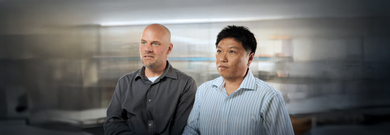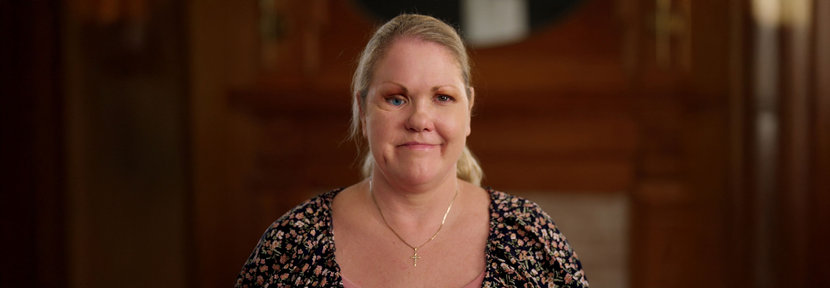5m Watch
9 de Outubro de 2025
TENDÊNCIAS TECNOLÓGICAS E DE DOENÇAS
Vídeo
Inside Cepheid: Learn About Cepheid System Innovation with Fellows, Ron Chang and Doug Dority
In a candid conversation, Cepheid Fellows Ron Chang and Doug Dority discuss their contributions to Cepheid Innovation and what drives them to innovate and create.
They tell their story, from their journey as curious young kids to young adults, and how they became Cepheid's founding fathers. Their first innovation was the thermocycler, which led them to their next idea: automating PCR amplification and detection within a self-contained cartridge.
And that's exactly what the technical fellows did when they designed the revolutionary Xpert cartridge. Watch to learn more.
Ron: Doug and I are very different. For me, I care only about the user.
Doug: What fuels me is knowing I can do something important that nobody else has done. When we design things, we argue a lot in our offices because tension creates beautiful things.
In a technology company, there are two tracks. There's the management track—the directors, vice presidents, president, CEO. Then there’s the technical track. The Fellow is the highest point of the technical track. Doug was the first Fellow, and I'm the second Fellow.
When I was 12 years old, I was walking over to my neighbor’s house and saw a guy working on a bicycle. I went over and said, "Hey, that’s really cool, you’re taking that apart. Could you show me what you're doing?" We've been friends ever since.
When I joined Cepheid, there were only six to twelve people. All-hands meetings were held in a little room that had been borrowed as a cafeteria.
Our first product was a real-time thermocycler. And the thing we came up with was the film-smart cycler tube. All our PCR happens in this little diamond.
Doug:
Here’s the paradox: you have a smart cycler tube and we’re supposed to do real-time PCR in 30 minutes, right? But it only takes you 4.5 hours on the bench to prep the sample to go into that tube. So you don’t get a result until five hours of work. So the Holy Grail in diagnostics is sample prep.
Ron:
The genius that Doug had was figuring out that you always have a sample, you always have to enrich, and you always have to deplete. When he wrapped this process around a three-dimensional cartridge and he figured it all out, it’s like doing a big matrix, and he got it. As soon as we saw it, we knew that was it.
Doug:
The thing that stops most medical technology and high-tech detection schemes from succeeding is that everyone forgets the simple part—because it’s not sexy. If you look inside the GeneXpert, as Doug designed it, there’s acceptance of the entire system.
Ron:
The modern-day cartridge has a lid with built-in functionality that allows for onboard reagents. It comes completely sealed from the factory so that dry reagents stay dry. When the user opens the lid, it peels the film away to allow the chamber to vent. This is crucial because without venting, fluids couldn’t transfer from one chamber to the next. The foot holds both the reaction tube and the valve body in place within the cartridge.
The GeneXpert cartridge design is a simple system—but it can do anything you can do on the bench and much more.
Ron:
At a critical point in its development, we faced a fork in the road: Do we design this for a machine or for a user? If we made it for a machine, it would be square and utilitarian, like an inkjet cartridge—ugly, no character. I said, "If I’m going to do this, let’s make it for a user."
While Doug was developing the module, I put the aesthetic wrapper on it. This here is the very first GX. After seven or eight years, we redesigned the system. The most elegant designs are the simple ones. You know it's good when it becomes obvious—almost inevitable.
Look at the GeneXpert instrument and the actual module size. That module performs real-time PCR while also completing full sample prep. In the industry, nothing else comes close in size or flexibility. It can run any future protocol we can imagine—something no other system can claim. It is truly a platform.
The way we see the GeneXpert moving forward is like a planet. There’s an entire universe around it, and the new GeneXpert is just a small part of that universe.
We’re still here, still working, looking 15 to 20 years ahead. We’re going to try a lot of crazy stuff. Our goal? To give people the tools for the future—to empower them to build the next generation of technology.
Ler a seguir
MAIS







